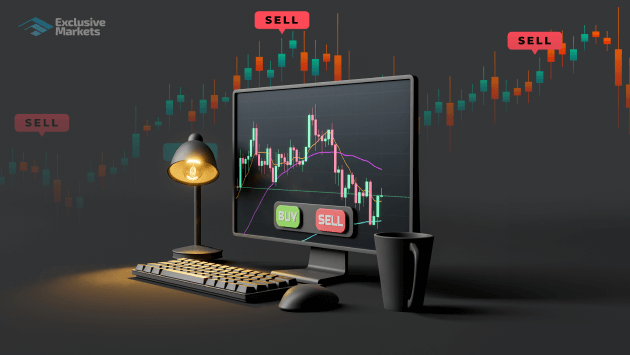The Ultimate Guide to Starting Your Forex Trading Business Leave a comment

The Ultimate Guide to Starting Your Forex Trading Business
Foreign exchange trading, or forex trading, has become an immensely popular way for individuals and institutions alike to engage in the global financial markets. With the rise of technology and the internet, the barriers to entry have decreased significantly, allowing almost anyone to start trading currencies. In this article, we will explore what it takes to start a successful forex trading business. We will cover the fundamentals of forex trading, the necessary tools and platforms, and strategies to enhance your trading outcomes. Additionally, we’ll take a look at forex trading business Indian Trading Platforms that can be leveraged for your trading journey.
Understanding the Forex Market
The forex market is the largest and most liquid financial market in the world, with a daily trading volume exceeding $6 trillion. Unlike stock markets, the forex market operates 24 hours a day, five days a week, allowing traders to engage at any time. The primary function of the forex market is to facilitate currency exchange for international trade and investment. However, it has also become a lucrative marketplace for speculation.
Key Players in the Forex Market
The forex market is composed of various participants, including:
- Central Banks: They manage national monetary policy and can influence currency values through interest rates and other economic policies.
- Financial Institutions: Banks and hedge funds often participate in forex trading for profit generation.
- Corporations: Businesses engage in forex trading to hedge against currency fluctuations during international transactions.
- Retail Traders: Individual traders who speculate on currency movements using online platforms.
Setting Up Your Forex Trading Business
Starting a forex trading business requires careful planning and consideration. Here are the steps you need to follow:
1. Choose a Trading Style
Deciding on a trading style is critical. Common trading styles include:
- Scalping: Involves making many trades per day, taking small profits from small price changes.
- Day Trading: Traders buy and sell currency pairs within the same trading day to capitalize on intraday price movements.
- Swing Trading: This style involves holding trades over several days or weeks, leveraging longer price movements.
- Position Trading: Traders hold positions for months or even years, based on fundamental analysis.
2. Select a Forex Broker
Your broker acts as an intermediary between you and the market. When choosing a broker, consider:
- Regulation: Ensure the broker is regulated by a recognized authority.
- Trading Costs: Look for competitive spreads and commissions.
- Trading Platforms: Check if they offer user-friendly platforms that support your trading style.
- Customer Support: A reliable broker should provide robust customer support.
3. Develop a Trading Plan
A well-defined trading plan is essential for success. Your plan should include:
- Risk Management Strategy: Determine how much of your capital you are willing to risk on each trade.
- Entry and Exit Criteria: Establish clear rules for entering and exiting trades based on technical or fundamental analysis.
- Performance Evaluation: Regularly assess your trading performance and adjust your strategies as necessary.
Tools and Resources for Forex Trading
Having the right tools can make a significant difference in your trading success. Here are some important tools and resources:
1. Trading Platforms
Choose a trading platform that allows you to access the forex market easily. Popular platforms include MetaTrader 4 (MT4), MetaTrader 5 (MT5), and TradingView. These platforms provide advanced charting, indicators, and automated trading capabilities.

2. Market Analysis Tools
Utilize tools that assist with both technical and fundamental analysis. These tools can help you identify trends, forecast movements, and make informed decisions.
3. Economic Calendar
Stay informed about economic events that may impact currency prices. An economic calendar provides crucial data releases, including GDP reports, employment figures, and interest rate announcements.
Developing Trading Strategies
Your trading strategy should be developed based on thorough research and backtesting. Here are a few popular strategies to consider:
1. Trend Following
Trend following strategies involve identifying and capitalizing on existing market trends. Traders analyze price movements and use indicators to determine the direction of the trend.
2. Breakout Strategy
This strategy focuses on entering trades when the price breaks through key support or resistance levels. It is based on the premise that once a breakout occurs, the price will continue in that direction.
3. Range Trading
Range trading entails identifying levels of support and resistance in a market that is not trending. Traders buy at support and sell at resistance, aiming to profit from price oscillations.
Risk Management in Forex Trading
Effective risk management is one of the most crucial aspects of successful trading. Here’s how to protect your capital:
1. Use Stop-Loss Orders
Always implement stop-loss orders to limit potential losses on trades. This allows you to manage your risk and avoid substantial losses if the market moves against you.
2. Risk-Reward Ratio
Ensure each trade has a favorable risk-reward ratio. A common rule is to aim for a 1:2 or 1:3 ratio, meaning for every unit of risk, you should aim for two or three units of potential profit.
3. Maintain a Trading Journal
Track your trades, strategies used, and their outcomes. A trading journal can help you identify strengths and weaknesses in your trading approach.
Conclusion
Starting a forex trading business can be both exciting and challenging. By understanding the market dynamics, choosing the right trading platforms, developing a robust trading plan, and implementing risk management strategies, you can increase your chances of success. Remember, continuous learning and adaptation are key to thriving in the fast-paced world of forex trading. Stay focused, practice diligently, and always remain open to learning new strategies as you grow your forex trading business.







